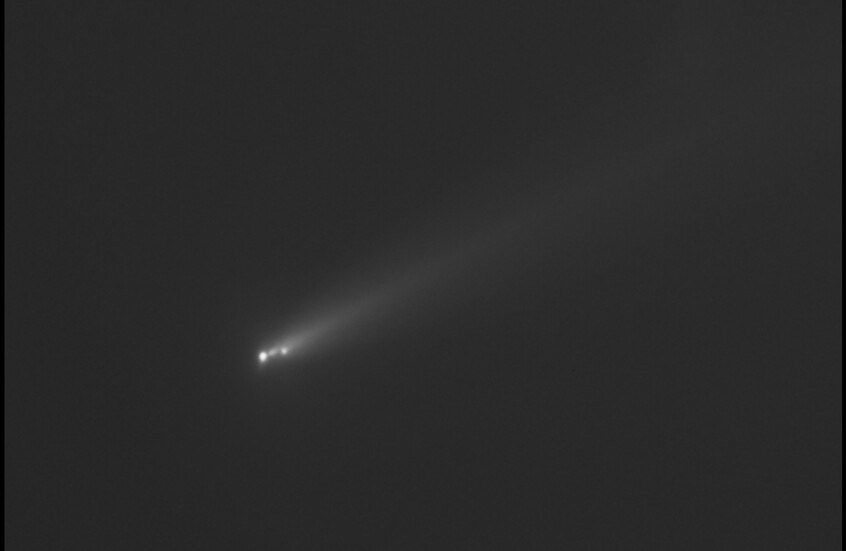Comet C/2025 K1 Splits into Three Parts After Close Encounter with the Sun

Astronomers documented remarkable scenes of the disintegration of comet C/2025 K1 (ATLAS) on the nights of November 11 and 12, after experiencing significant structural disruption due to its close approach to the Sun in early October.
Since its discovery in May 2025, the comet's brightness has increased significantly as rising temperatures near the Sun transformed the ice in its nucleus into gas, forming a bright "coma" around it. Solar winds subsequently pushed these gases behind the comet, creating its distinctive tail. However, its brightness did not reach a level visible to the naked eye.
The critical approach on October 8 caused severe damage to the comet's structure, which has developed over billions of years, leading to its partial disintegration. Astronomers were able to observe this rare event using the 1.82-meter "Copernicus" telescope at the Italian "Asiago" Observatory.
Observations revealed that by the night of November 11, the comet had split into three distinct parts. Astronomer Mazota Epifani, in a statement from the Italian National Institute of Astrophysics, noted that initial images "showed two close fragments separated by approximately 2,000 kilometers," suggesting the presence of a smaller, less bright third fragment alongside the two larger pieces.
Astronomer Gianluca Masi from the "Virtual Telescope Project" also captured additional images of the disintegration process on the nights of November 12 and 13, which displayed the separation of a significant portion of the nucleus facing the Sun.
It is believed that comet C/2025 K1 originated from the distant Kuiper Belt and may be disintegrating during its first journey through the inner solar system, serving as a "time capsule" that carries early traces of the planetary nebula from which the solar system's planets formed.
It is important to note that this comet is not related to the recently reported interstellar comet 3I/ATLAS, despite the similarity in names due to the same discovery system.
